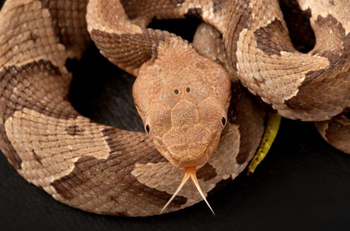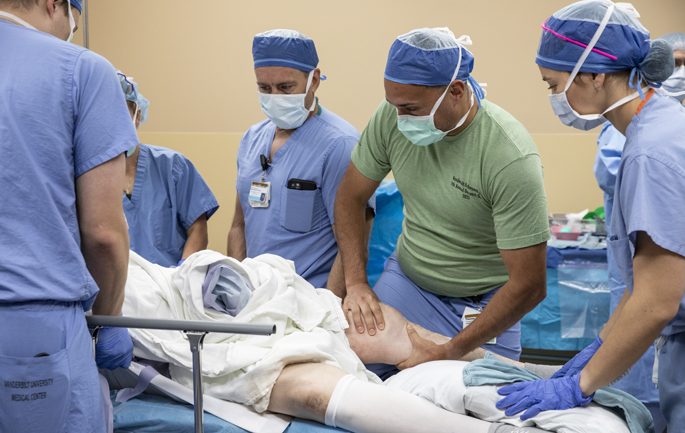As summer approaches and many Tennesseans come outdoors for hiking and boating and other warm-weather activities, snakes will emerge as well. Vanderbilt University Medical Center medical toxicologist John Benitez, M.D., MPH, associate professor of Clinical Medicine and Emergency Medicine, offers tips for avoiding these reptiles and what to do if bitten.

“While snakes are not generally dangerous to humans, they will strike when threatened,” said Benitez. “In Tennessee, we see around 50 bites per year. So far this year, the Tennessee Poison Center (TPC) has received 35 calls about snake bites. Though the odds of dying from a snake bite are not high, the best way to avoid a worst-case scenario is to know the different types of snakes we have in the area, where they are likely to be encountered and what to do when bitten.”
Benitez said the rattlesnake, copperhead and water moccasin are the three venomous snakes native to Tennessee.
Rattlesnakes are the most easily identifiable, he said. They have a rattle at the end of their tail which they shake in agitation or warning. Timber rattlesnakes, among other species, are most often found in heavily wooded spaces, where they tend to seek shelter in rocky areas and underbrush. Pigmy rattlesnakes are more frequently found in floodplains and woods near waterways surrounding the Tennessee River in the western half of the state.
Copperheads are rust colored with golden-tan bands and prefer open fields or lightly wooded areas as habitats. Benitez notes that they are frequently found in farmlands and are likely the most commonly encountered by humans.
The water moccasin can range in color from dark brown to black and has a distinctive white mouth when it is open, from which its alternate name, the cottonmouth, is derived. Because they need to be near water, they are likely to be encountered while swimming in lakes, streams and rivers, and are found primarily in the southern half of the state.
Because they are cold-blooded, snakes rely on the sun and warm surfaces to maintain their body heat when not hibernating. As a result, they frequently bask in the sun in open areas such as on rocks, pavement and sidewalks at peak hours during the day.
“People will likely encounter a snake at least once in their lives if they spend much time outside,” Benitez said. “It’s perfectly fine to watch them from afar, but agitating them, whether it be by getting too close, trying to pick them up or even poking at them in order to make them move, could cause a snake to strike at you. The best policy, if you should see a snake, is simply to let it be.”
However, if bitten, Benitez details what to do:
• Call the TPC at (800) 222-1222;
• Remain calm. The venom of the snakes endemic to Tennessee is not highly potent, so there is time to seek appropriate treatment — but if envenomation does occur, panicking will elevate your heart rate, increasing the speed at which the venom moves through your body;
• Continuously monitor symptoms so they can be described to medical professionals. Significant swelling, pain beyond what would be expected from a regular animal bite, seemingly unstoppable bleeding and nausea or vomiting can all be symptoms of envenomation.
He also warns against what not to do:
• Do not try to extract the venom by sucking on or cutting into the wound — this has not been shown to have any benefit to the patient and can actually cause more damage to the affected area;
• Avoid applying a tourniquet to the affected limb—this could result in loss of the limb due to lack of blood flow;
• Do not try to find the snake after the bite; while it is helpful to have a description, it is not necessary.
Once at a treatment facility, the bite will be evaluated for potential envenomation and infection. Benitez says that the only treatments generally necessary, beyond general wound care, might be treatment with antivenom, which blocks the snake’s venom from having any negative effects, and a tetanus shot to prevent tetanus infection.















